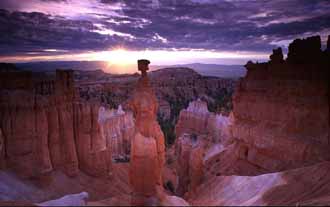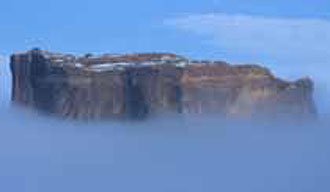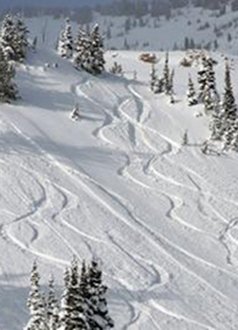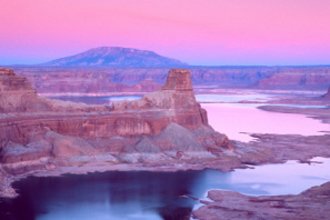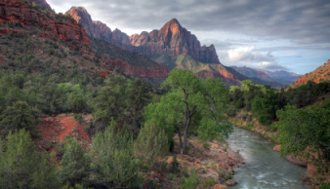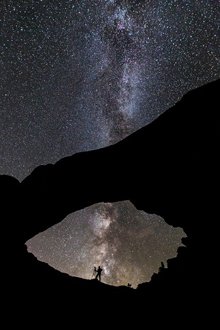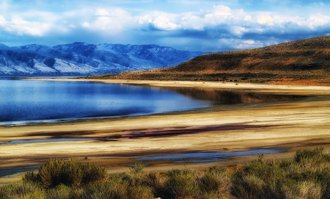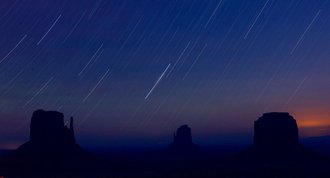That You Were Never The Same?
Fred Hayes State Park
at Starvation
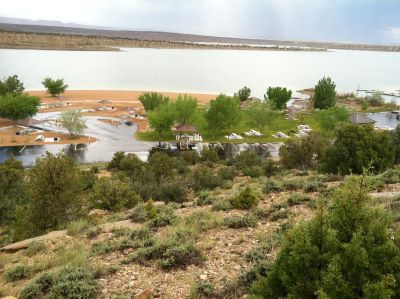
Photo: Travel Utah
Renamed in Honor of Utah’s
“Mr.
State Parks”
When I started doing research recently on the 46 Utah State Parks, I started looking for Starvation State Park on the list. I soon learned that it had been renamed Fred Hayes State Park at Starvation in 2019.
Despite my initial reaction, I learned that it wasn’t to erase the colorful frontier myths behind the original title. It was renamed for a legitimate reason.
It was done so to honor Fred Hayes, longtime member of the Utah Division of Parks and Recreation, who devoted nearly three decades to making Utah’s park system one of the nation’s best. He was the director from 2012 – 2018.
The big man died unexpectedly in 2018. He loved this rough-edged reservoir in Duchesne County. Anyone who spends a summer evening watching orange light creep across its sandstone bluffs quickly understands why.
From Dusty Draw to Desert Water
Starvation Reservoir did not even exist until 1970 when the Bureau of Reclamation finished Knight Diversion Dam on the Strawberry River. The project stored irrigation water for Duchesne Valley farmers.
They had long battled fickle desert moisture just like they do today. Lack of water is not a recent phenomenon in Utah despite what you may have read. So many of the Utah State Parks … at least the reservoirs … were created for the same reason.
In the process, it flooded a sagebrush basin that local cowboys once dubbed “Starvation Draw”. Its name came about because either livestock, prospectors or a band of outlaws met their demise by starvation in the area. Take your pick. Every old-timer swears by a different origin story.
Today the 3,500-acre impoundment is anything but barren although trees are still few and far between. The water glints cobalt against creamy Moenkopi cliffs.
The park sits at 5,700 feet. Just high enough for cool nights yet low enough that late May and early June mornings are already starting to feel like summer.
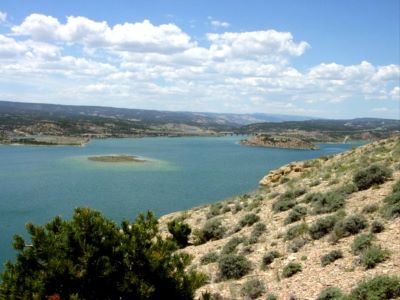
Photo: Travel Utah
A Four-Season Reservoir
Spring arrives up here with the gusts of sage-scented wind interrupted by whirring outboard motors. Walleye and smallmouth bass prowl rocky points. Rainbow trout cruise the coves. In June, waterskiers carve the smooth bays before lunch.
Then boaters may retreat to shaded cabanas while afternoon thermals stir up the whitecaps. By late July, the surface temperature hovers in the mid-70° F range. That’s perfect for kayaks, paddleboards and kids leaping off anchored pontoon boats.
Autumn is magic. Crowds thin (as they always seem to in Utah). Whether it is because of back to school, football season, or who knows what. The crowds are just significantly down in the mountains at the best time of year to be there – the fall.
Aspens flash gold in distant Uinta foothills. Cool air settles across mirror-still water at dawn. Anglers know October can deliver trophy walleye that has given Starvation its nationwide reputation.
Walleye over 10 lbs. are not uncommon here. The caught-and-kept record is 31.75” and 15 lbs. 9 ounces. The state record catch-and-release walleye … 31.5” … was caught in these waters in 2002.
Even winter draws its share of devotees. Once the ice thickens to a safe ten inches, orange pop-up shelters dot the frozen expanse.
Inside, anglers jig for perch while snowmobiles buzz the perimeter trails. On moonless nights, the Milky Way pours across the sky. The nearest stoplight is twenty miles away.
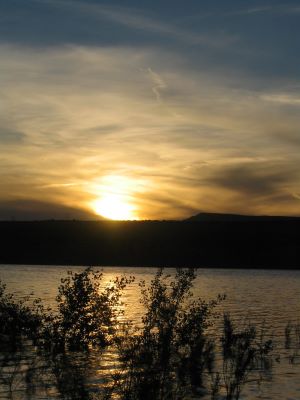
Camp Where the Park Meets the Water
Fred Hayes State Park offers four distinct camping areas each with its own vibe: the main Mountain View loop near the boat ramp, walk-in beach sites at Rabbit Gulch, cliff-top RV pads in Knight Hollow, and an ATV-friendly enclave at Juniper Point on the north shore.
Flush toilets and hot showers serve the developed loops but primitive areas retain their edginess. Bring extra water, a primal mindset, and a taste for stars if you plan on spending time in one of these. I used to enjoy that kind of camping but prefer a more comfortable arrangement now.
- Mountain View Campground – Full hookups, shaded cabanas. Best for families towing boats.
- Rabbit Gulch – First-come beach camping. Stake your tent in sand ten steps from the water’s edge. Plan on extra clean-up time when you get home.
- Knight Hollow – Electricity, vault toilets and kayak launches tucked into sandstone coves. More and more kayaks and paddleboards seem to be visible on Utah waters in recent years.
- Juniper Point – Dispersed sites amid piñon. Direct access to off-highway riding on BLM land. Miles and miles of it.
Much like Strawberry Reservoir, expect wind. Veteran visitors bungee everything and face tents east to catch gentle morning breezes while dodging the blustery afternoon gusts.
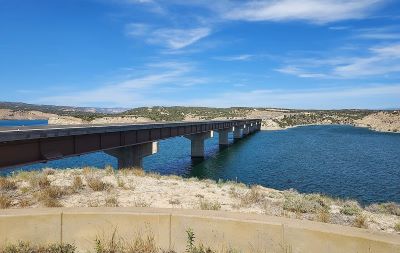
Playing On (and Off) the Water
Boating is the heartbeat of Fred Hayes State Park at Starvation (I know, a mouthful). Two concrete ramps … one at Mountain View, another at Knight Hollow … serve everything from jet skis to the highest speed cruisers.
On holiday weekends you will hear the thump of stereo speakers and kids laughing while trying to keep aboard inflatable tow-toys. Mid-week mornings, though, you might share the entire lake with a lone float tuber casting streamers toward weed beds.
Hikers can explore miles of shoreline or tackle the unofficial Starvation Perimeter Route. This is a 7-mile undulating hike from Mountain View to Knight Hollow. Keep your eyes peeled for pronghorn grazing among rabbitbrush and raptors circling thermal updrafts.
Always watch for rattlesnakes in this kind of terrain. Hikers should be careful especially in areas with tall grass and rocky terrain. They are protected by law and are most active during late spring and early summer.
Nearby, the Hanna-Tabiona Scenic Backway climbs into pine-scented high country. Duchesne’s Utah Fire Museum offers a quirky indoor detour when midday heat bakes the rocks. There is even a 3-D archery course for those getting ready for the bow hunt.
Name Change, Same Soul
Fred Hayes joined Utah State Parks in 1982 serving as Duchesne district ranger before rising to director in 2012. Colleagues remember him as a straight-talker whose hearty laugh carried across marina docks. When he passed away in 2018, legislators, boaters and campground hosts alike pushed to rename his favorite lake in tribute.
The new signs went up the following spring but Utahns still slip up (or do it on purpose) and call it Starvation. In truth, both names fit. Harsh desert beginnings … reborn through water and recreation … are now anchored by a man who believed in making parks accessible to everyone.

General Info & Fees
Fred Hayes State Park at Starvation lies just four miles northwest of the town of Duchesne along US-40. It is about a two-hour drive from Salt Lake City.
- Summer day-use runs $10 per vehicle for Utah residents. $15 for out-of-staters.
- Camping ranges from $35-$45 depending on hookups.
- Beach primitive sites remain a bargain at $20.
- For current fees … they change frequently and in one direction … go to the state website.
- Hours: Summer - 6:00 A.M. to 10:00 P.M. Winter - 8:00 A.M. to 5:00 P.M. Public restrooms are also open daily.
- Quagga-mussel inspections are mandatory at the gate so arrive with plugs out and boards drained.
- For reservations, check the Reserve America site.
Gas, groceries and (I have read) a surprisingly good taco truck await in Duchesne just a few miles from the park. For a bigger grocery haul, Vernal sits 45 minutes east.
Cell service is solid in the main campground but fades around Juniper Point supposedly. Cell reception is getting better every year in our mountains but you may want to download maps before venturing onto dirt roads.
How To Get To Fred Hayes State Park
at Starvation
Starvation is approximately 118 miles east of Salt Lake City along US-40. It is four miles northwest of the town of Duchesne.
If you are coming from the Salt Lake area on US-40, go to the West end of Duchesne City. Look for the Gateway Sinclair convenience store. Just west of this store is SR-311. Take that north 2 ½ miles to get to the park.
If you are coming from US-191 (Price) or east (from Roosevelt) on US-40, the directions are similar. From US-191, turn left on US-40. Go to the west end of Duchesne City. Look for the same Gateway Sinclair convenience store. Just west of this store is SR-311. Take it north for 2.5 miles.
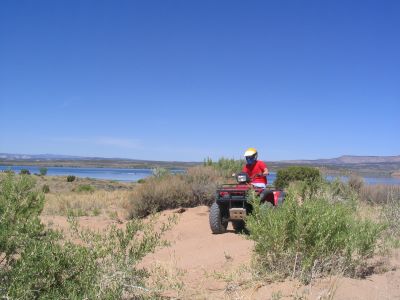
Why It Belongs on Your
Utah Visit List
Fred Hayes State Park at Starvation isn’t a polished resort lake. Wind can whip sand into your sandwich. The ebb and flow of the waterline changes frequently due to the irrigation demand.
But if you crave honest desert water … uncrowded, unpretentious and wrapped in big-sky sunsets … you’ll find yourself vowing a return before you’ve even packed the camp chairs.
Fred Hayes himself once said the measure of a good park was simple. Provide people with an experience that leaves them smiling and planning to come back.
Fred Hayes State Park at Starvation
PO Box 584
Duchesne, UT 84021
Website: https://stateparks.utah.gov/parks/starvation/


